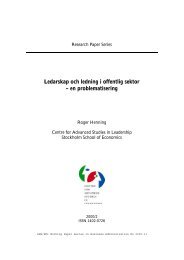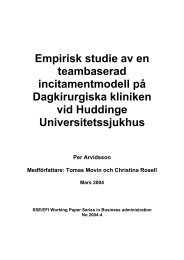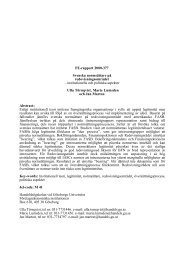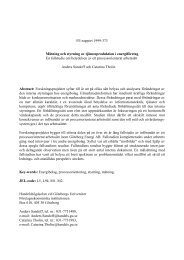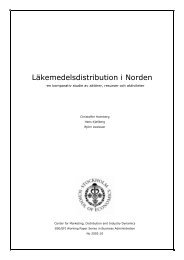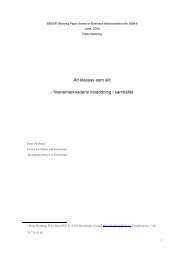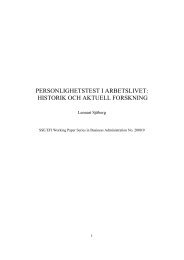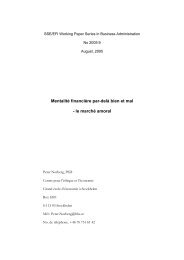Big Five Plus - S-WoBA - Handelshögskolan i Stockholm
Big Five Plus - S-WoBA - Handelshögskolan i Stockholm
Big Five Plus - S-WoBA - Handelshögskolan i Stockholm
Create successful ePaper yourself
Turn your PDF publications into a flip-book with our unique Google optimized e-Paper software.
15. Barrett, P., Kline, P., Paltiel, L., & Eysenck, H. J. (1996). An evaluation of the psychometric<br />
properties of the concept 5.2 Occupational Personality Questionnaire. Journal<br />
of Occupational and Organizational Psychology, 69(1), 1-19.<br />
16. Barrick, M. R., & Mount, M. K. (1991). The <strong>Big</strong> <strong>Five</strong> personality dimensions and job performance:<br />
A meta-analysis. Personnel Psychology, 44(1), 1-26.<br />
17. Barron, F. (1953). An ego-strength scale which predicts response to psychotherapy. Journal<br />
of Consulting Psychology, 17, 327-333.<br />
18. Bateman, T. S., & Crant, J. M. (1993). The proactive component of organizational behavior:<br />
A measure and correlates. Journal of Organizational Behavior, 14(2), 103-118.<br />
19. Bernard, L. C., Hutchison, S., Lavin, A., & Pennington, P. (1996). Ego-strength, hardiness,<br />
self-esteem, self-efficacy, optimism, and maladjustment: Health-related personality<br />
constructs and the "<strong>Big</strong> <strong>Five</strong>" model of personality. Assessment, 3(2), 115-131.<br />
20. Björklund, C. (2001). Work motivation - Studies of its determinants and outcomes. <strong>Stockholm</strong><br />
School of Economics, <strong>Stockholm</strong>.<br />
21. Björklund, C. (2007). Work motivation and perceived risks. International Journal of Risk<br />
Assessment and Management, 7(2), 237-247.<br />
22. Block, J. (1995). A contrarian view of the five-factor approach to personality description.<br />
Psychological Bulletin, 117(2), 187-215.<br />
23. Bouchard, T. J., & Loehlin, J. C. (2001). Genes, evolution, and personality. Behavior Genetics,<br />
31, 243-273.<br />
24. Bowen, C.-C., Martin, B. A., & Hunt, S. T. (2002). A comparison of ipsative and normative<br />
approaches for ability to control faking in personality questionnaires. International<br />
Journal of Organizational Analysis, 10, 240-259.<br />
25. Brackett, M. A., Rivers, S. E., Shiffman, S., Lerner, N., & Salovey, P. (2006). Relating<br />
emotional abilities to social functioning: A comparison of self-report and performance<br />
measures of emotional intelligence. Journal of Personality and Social Psychology,<br />
91(4), 780-795.<br />
26. Brown, J. D., & Dutton, K. A. (1995). The thrill of victory, the complexity of defeat: Selfesteem<br />
and people's emotional reactions to success and failure. Journal of Personality<br />
& Social Psychology, 68(4), 712-722.<br />
27. Brown, S. P., Cron, W. L., & John W. Slocum, J. (1997). Effects of Goal-Directed Emotions<br />
on Salesperson Volitions, Behavior, and Performance: A Longitudinal Study.<br />
Journal of Marketing, 61(1), 39-50.<br />
28. Brändström, S., Sigvardsson, S., Nylander, P.-O., & Richter, J. (2008). The Swedish version<br />
of the Temperament and Character Inventory (TCI): A cross-validation of age<br />
and gender influences. European Journal of Psychological Assessment, 24(1), 14-21.<br />
152



